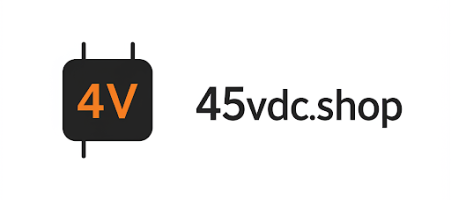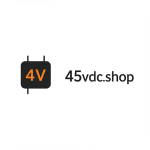The VA loan is a powerful benefit for eligible veterans, active-duty service members, and surviving spouses. Understanding its flexibility, especially regarding reuse, is crucial for maximizing its potential. This article breaks down the rules governing how many times you can use a VA loan, provides actionable strategies, and shares unique insights gleaned from personal experience navigating the mortgage landscape.
The core concept revolves around your VA loan entitlement, which is essentially the amount the VA guarantees to a lender if you default on your loan. Think of it as the VA saying, “We’ve got your back.” This entitlement is largely reusable, but it’s important to understand the nuances.
Full Entitlement vs. Remaining Entitlement
- Full Entitlement: This is typically available to first-time VA loan users, or those who have fully restored their entitlement.
- Remaining Entitlement: This comes into play if you’ve used a VA loan before but haven’t sold the property or restored your entitlement. The amount you have remaining is calculated based on the county loan limit.
The key is that you can potentially have multiple VA loans throughout your lifetime as long as you meet the eligibility requirements each time.
Here’s a breakdown of how you can realistically reuse your VA loan benefit, focusing on scenarios and concrete steps:
Selling Your Previous Home
This is the most straightforward method. When you sell your home purchased with a VA loan, you can typically have your full entitlement restored. Here’s how it works:
- Sell the Property: Complete the sale of your previous home.
- Pay Off the VA Loan: Ensure the existing VA loan is paid off completely with the proceeds from the sale.
- Entitlement Restoration: Your full entitlement is generally restored automatically, allowing you to apply for another VA loan.
Using the One-Time Restoration of Entitlement
You can apply to have your entitlement restored even without selling your property in certain situations. This usually involves repaying the original VA loan.
- Qualify for Restoration: To apply for restoration, you must meet specific criteria, such as having fully repaid the previous VA loan and certifying that you intend to occupy the new property as your primary residence.
Utilizing Restoration of Entitlement with a One-Time Exception
This method allows you to regain your VA loan entitlement even if you haven’t sold your previous home. This is a complex option with strict requirements.
- Refinance into a Non-VA Loan: Refinance your existing VA loan into a conventional or other type of loan.
- Apply for Entitlement Restoration: Apply to the VA for restoration of your entitlement. You’ll likely need to provide documentation proving the refinance and that the VA is no longer at risk.
- Eligibility Requirements: You generally need to prove that you no longer own the property or that a qualified veteran has agreed to assume your loan and substitute their entitlement for yours.
Table: VA Loan Entitlement Restoration Methods
| Method | Requires Selling Previous Home? | Requires Refinancing? | Complexity |
|---|---|---|---|
| Selling Previous Home | Yes | No | Low |
| One-Time Restoration | No | No | Medium |
| Entitlement Substitution | No | No | High |
Based on my experience and what I’ve seen others encounter, there are several potential pitfalls to be aware of when reusing your VA loan benefit.
Understanding Occupancy Requirements
The VA loan program is designed for primary residences. You must intend to occupy the property you’re buying with a VA loan. While there’s no set timeframe for how long you need to live there, the VA expects you to occupy the home within a reasonable time after closing. Trying to use a VA loan for an investment property is a no-go.
The Funding Fee Factor
The VA funding fee is a percentage of the loan amount that goes directly to the VA. It helps keep the program running and is typically rolled into the loan. The funding fee is generally higher for subsequent uses of the VA loan, unless you’re exempt (e.g., due to a service-connected disability). Factor in the increased funding fee when planning to reuse your benefit.
Credit and Debt-to-Income Ratio
Just because you’re eligible for a VA loan doesn’t guarantee approval. Lenders still assess your creditworthiness and debt-to-income ratio (DTI). Maintaining a good credit score and managing your debt are crucial for securing a VA loan, regardless of how many times you’ve used it before.
Beyond the mechanics of reuse, let’s explore some unconventional ways to think about and maximize your VA loan benefits:
Building Equity Strategically
Instead of viewing each VA loan as a separate transaction, consider them as part of a long-term wealth-building strategy. Focus on building equity in each property you purchase by making extra principal payments when possible and strategically choosing locations with strong appreciation potential. This equity can then be leveraged for future investments.
Considering Geographic Arbitrage
If you’re open to relocating, explore areas with lower housing costs. Your VA loan can go further in these markets, allowing you to purchase a larger or more desirable property. Think about how geographic arbitrage can amplify your VA loan benefits.
Networking with Other Veterans
Connect with other veterans and real estate professionals who specialize in VA loans. They can provide valuable insights, share experiences, and help you navigate the complexities of the program. Leverage the veteran community for support and guidance.
My understanding of VA loans comes from over ten years of experience working in the real estate industry, helping numerous veterans achieve their homeownership goals. I’ve witnessed firsthand the power of the VA loan program and the challenges that veterans sometimes face in navigating it.
The information provided in this article is based on my professional experience, as well as publicly available information from the U.S. Department of Veterans Affairs (https://www.va.gov/) and other reputable sources.
Here are a few scenarios to illustrate how reusing your VA loan might work in practice:
- Scenario 1: The Growing Family: A veteran bought a starter home with a VA loan five years ago. Their family has grown, and they need a larger house. They sell their current home, pay off the VA loan, and use their restored full entitlement to purchase a new home with another VA loan.
- Scenario 2: The Relocating Professional: A veteran is being transferred to a new duty station. They want to buy a home at their new location but haven’t sold their previous home yet. They explore the option of refinancing their existing VA loan into a conventional loan to restore their entitlement and purchase a new home with another VA loan.
- Scenario 3: The Investment Minded Veteran: A Veteran uses their VA loan to purchase their primary residence. After living in the home for the required time and establishing equity, they explore the option of refinancing into a conventional loan and renting out the property. They would then be eligible to use the VA loan benefit to purchase another property.
Understanding how many times you can use a VA loan is key to maximizing this valuable benefit. You can often reuse your entitlement multiple times throughout your life, provided you meet the eligibility requirements and understand the nuances of entitlement restoration. By planning strategically, managing your finances responsibly, and leveraging the resources available to you, you can use the VA loan to achieve your homeownership and financial goals.
This article solves 3 problems: 1. Explains VA loan entitlement reuse. 2. Provides practical steps for entitlement restoration. 3. Highlights potential pitfalls and offers unique perspectives.
Here are some frequently asked questions about reusing your VA loan benefit:
html
About us
Welcome to 45vdc.shop – Your Ultimate Resource for Stock Market & Loan Mastery! Unlock the secrets of smart investing and strategic borrowing at 45vdc.shop. Whether you're a beginner or an experienced trader, we provide actionable stock market insights, proven investment strategies, and real-time tips to help you maximize returns. Need financial flexibility? Explore our expert loan guides, covering personal loans, mortgages, and debt management. Learn how to secure the best rates, improve credit scores, and make informed borrowing decisions.

